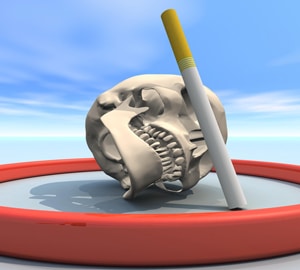
September 3, 2018
Smoking And Quitting
By Michael D. Shaw
Back in 1805, Charles Lamb wrote “A Farewell to Tobacco.” Within its 815 words is this memorable passage:
For I must (nor let it grieve thee,
Friendliest of plants, that I must) leave thee.
For thy sake, tobacco, I
Would do any thing but die,
And but seek to extend my days
Long enough to sing thy praise.
Alas, a love-hate relationship with the plant Nicotiana tabacum existed even then.
Tobacco is native to North and South America, and was encountered by the explorers of the 15th and 16th centuries. The native cultures had long-established traditions of chewing, smoking, and snuffing tobacco, sometimes in conjunction with other psychotropic plants. Some sources suggest that Columbus was the first European to see the plant, but apparently, he never smoked the leaves. Rather, it was one of his crewmen on the Santa Maria, Rodrigo de Jerez, who holds the distinction of being the first European smoker. 1492 really was a momentous year.
Back in Spain, and continuing his habit, de Jerez astonished onlookers. They attributed the smoke coming out of his mouth and nose as a sign of demonic possession, and he was imprisoned for three years by the Inquisition. I assume he kicked the habit while incarcerated. Notably, more people tried smoking while de Jerez was in prison, but even then, some thought that it was unhealthy.
Still, smoking would catch on with the public soon enough. By the 1530s, tobacco was being cultivated as a serious cash crop in the Caribbean, being exported back to Europe. Smoking would increase in popularity, with pipe smoking and snuff being all the rage in London in the 17th century. Commercial cigarettes were introduced by North Carolinian Washington Duke in 1865, but these were all hand-rolled. It would take the advent of the cigarette-rolling machine, in 1880, which could roll 200 cigs per minute, to jump-start the market. With this, cigarettes would become the dominant smoking material.
Although Richard Doll is rightly famous for his work establishing the link between lung cancer and smoking, such an association was reported as early as 1939 in an article from FH Müller, entitled “Tabakmissbrauch und Lungencarcinom” (Tobacco consumption and lung carcinoma). The 1964 Surgeon General’s Report presented the dangers of smoking to the American public, and now no one could deny that there were good reasons to quit.
In 2014, the Surgeon General issued a report entitled “The Health Consequences of Smoking—50 Years of Progress.” Here are a few key points:
- Since the first Surgeon General’s report on smoking and health was published 50 years ago, more than 20 million Americans have died because of smoking.
- Smoking rates among adults and teens are less than half what they were in 1964; however, 42 million American adults and about 3 million middle and high school students continue to smoke.
- Nearly half a million Americans die prematurely from smoking each year.
- More than 16 million Americans suffer from a disease caused by smoking.
- On average, compared to people who have never smoked, smokers suffer more health problems and disability due to their smoking and ultimately lose more than a decade of life.
- In the United States, smoking causes 87 percent of lung cancer deaths, 32 percent of coronary heart disease deaths, and 79 percent of all cases of chronic obstructive pulmonary disease (COPD).
- One out of three cancer deaths is caused by smoking.
But…how should you quit? Sundry sources list such methods as behavioral therapy, cold turkey, combination treatments, hypnotism, medication, and nicotine replacement therapy. Oddly, e-cigarettes are left out of nearly every official list, even though a significant number of people use e-cigs for precisely this purpose.
I was recently introduced to a very interesting smoking-cessation product called Harmless Cigarette™. Harmless Cigarette focuses on satisfying both the psychological and physical “hand to mouth” addiction which most smokers find difficult to overcome when quitting. It uses a proprietary non-electric breathable air filter to kill the cravings. There are no chemicals, and it’s completely natural.
As marketing rep Jennifer Lewis told me, “It’s better, safer, and healthier to counteract cravings for nicotine not with something that has less nicotine, but rather a natural alternative that has no nicotine or negative side effects. Our product name speaks for itself, it is a Harmless Cigarette, 100% non-electric, completely free of nicotine, tobacco, and the harmful chemicals like those found in nicotine replacement therapy products and medications. And, unlike e-cigs, Harmless Cigarettes can be used anywhere, including on board airplanes.”
